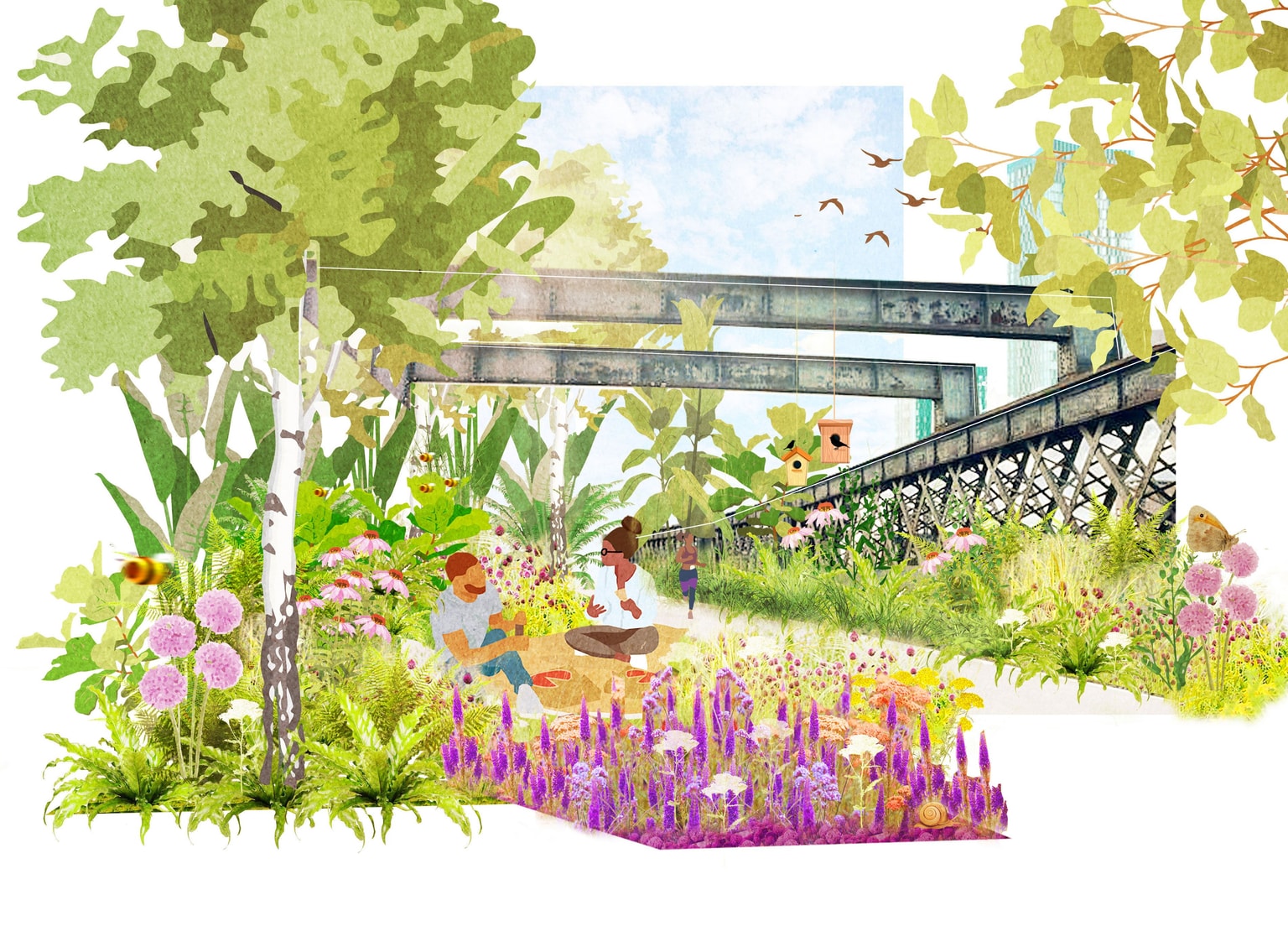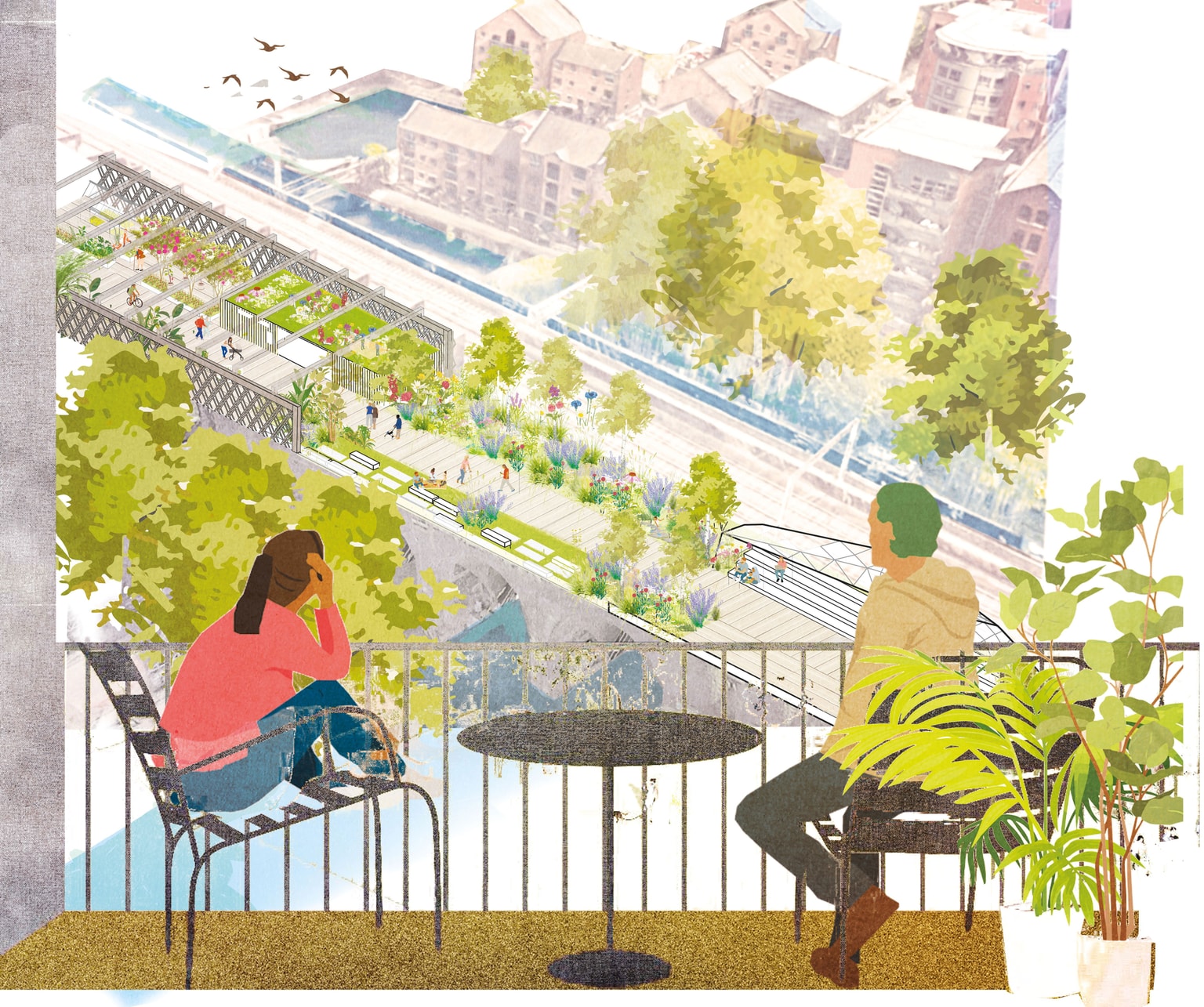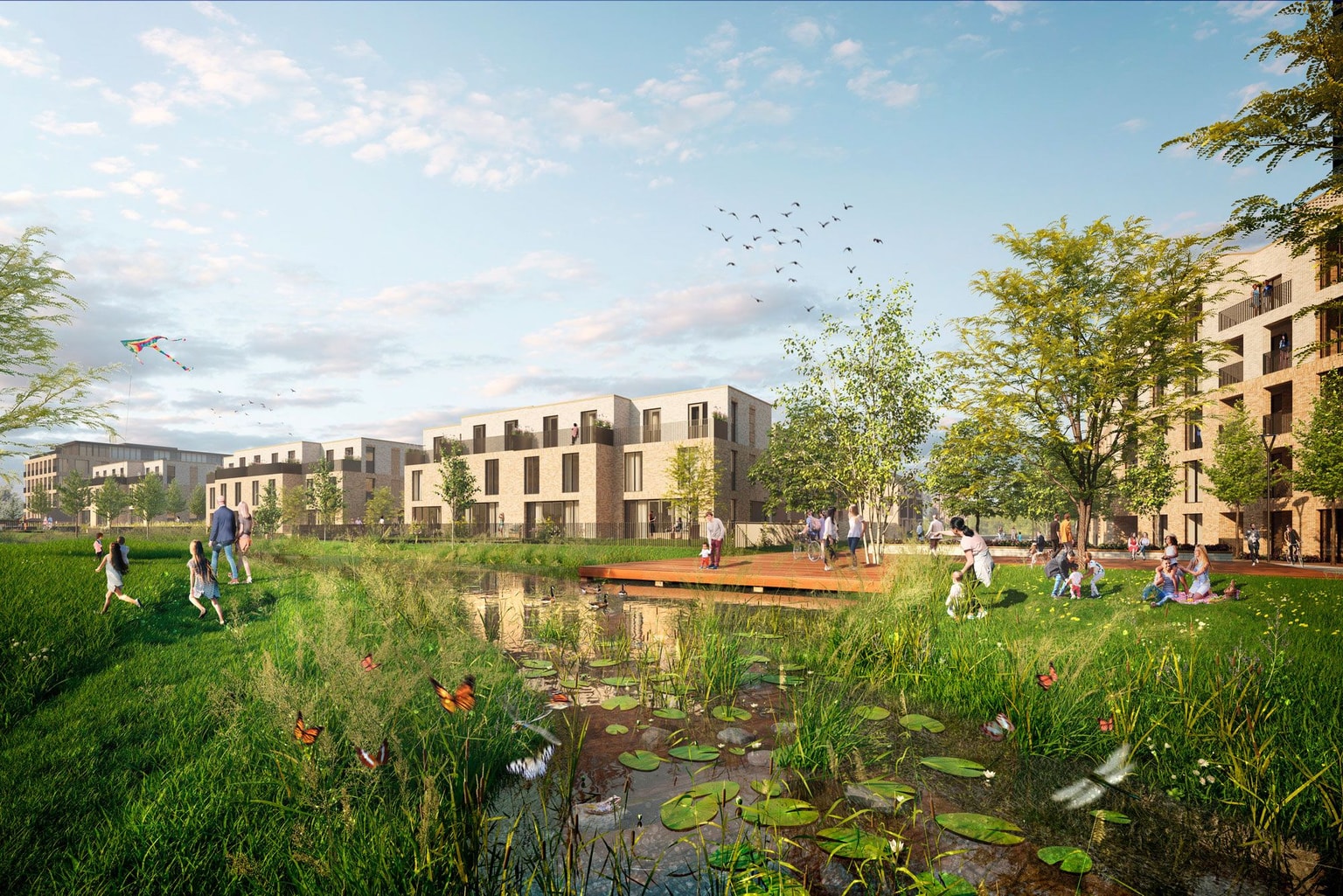Nature finally has a seat at the table
Associate, Duncan Mackay gives a planner’s perspective on biodiversity net gain in the development of homes, businesses, and infrastructure in the UK.
Nature finally has a seat at the table.
But it comes following a damning statistic about how we have protected our natural environment in the past. The UK has lost almost half its wildlife species since the industrial revolution; 13% of which has been lost since the 1970s. That’s why from 12th February 2024, the UK has become the first country in the world to ensure all new developments require at least a 10% uplift of biodiversity.
The goal of this requirement is to ensure that every new development contributes positively to the conservation and enhancement of biodiversity, meaning if all goes to plan, we will leave places in a better state than when we found them.
We’re all now feeling the impact of climate change, and a Biodiversity Net Gain (BNG) policy presents the most significant opportunity to do something that makes a positive change. By halting and reversing nature’s decline BNG can undo the damaging effects of climate change. But it can’t do the job alone.
So what does all this mean for planners and designers? Can we help get developers on board? Who is regulating and keeping check on the policy to ensure we are hitting the targets? Here’s everything you need to know about this new regulation…

How does Biodiversity Net Gain work?
Firstly, it is important for designers and developers to understand the concept of biodiversity net gain. This is the difference between the pre-development biodiversity value of a site and its post-development value. A net gain can be achieved through a variety of means, such as the creation of new habitats, the restoration of existing habitats, and the incorporation of green infrastructure into the design of new developments.
When a development is not able to accommodate this required increase in biodiversity, off-site habitat enhancement will instead be required, i.e. tradeable habitat units for developers to purchase to offset shortfalls in mitigation. Every effort should be made to plan for a net gain on site but we should also note that this market for biodiversity units will create a new market worth £135m to the British economy, every year and could go some way to improving the quality and the biodiversity of unused farmland and our greenbelt. There is value in nature!

How is Biodiversity Net Gain calculated?
The government has published a quantitative tool to calculate habitat value. This is an area-based calculation which factors in the type and quality of specified habitats present on a given site. These are determined via ecological appraisals, the results of which are entered into the DEFRA (Department for Environment, Food and Rural Affairs) Biodiversity Metric calculator – an online tool.
A similar exercise is then completed for the proposed development to specify the land uses and quality after the scheme is constructed. Once both sets of data are entered, the metric calculates the biodiversity units for the pre and post development scenarios. The net gain or net loss will be the difference between the two biodiversity unit figures.
It should be noted that biodiversity units are a function of habitat quality and area, a smaller area of very high-quality habitat may result in more biodiversity units than a larger area of degraded habitat. Further to this, not all habitats are of equal value. For example, mature trees, hedgerows, wildflower meadows and heaths all result in very high biodiversity units.
We have been using the DEFRA BNG metric for a number of years where local planning authorities have sought biodiversity net gain prior to approving planning applications. We have been able to achieve significant net gains and in other instances we have identified a biodiversity deficit that cannot be made up onsite without significant compromises in other areas of the design.
Working on sites across England there are a few additional observations worth making:
- Brownfield sites can often have a higher-than-expected number of habitat units and these can sometimes be difficult to replace. Brownfield sites include a range of often quite low amenity but relatively valuable habitats that are not easily replicated in viable designs.
- All mature trees result in relatively high habitat unit scores and replacement needs to be on a ratio (10:1 or similar) that is often not viable or achievable. Even relatively low amenity trees can drive high habitat unit scores.
- Hedgerows are a very high value habitat. In one of our recent schemes in West Yorkshire, the loss of relatively small areas of broken hedgerow across a greenfield site resulted in a significant biodiversity deficit that could not be mitigated onsite.
- Conversely, on another development, it was possible to introduce new hedges and connect these into existing mature hedges resulting in a multiplier effect and a net gain in excess of 100%.
- The exact nature of the proposals can have a significant impact. Our design for Stockport Bus Interchange achieved a headline net gain of 10%. However, the scrub that was lost as result of the development was not on a like-for-like or better basis. As a result, a net loss was forecast and the design needed to modified to accommodate additional, species rich planting on adjacent land outside of the scheme boundary.
- Any proposals that include work to riverside or waterside habitats can have a significant impact which can be very difficult to mitigate.

The planner’s perspective
When it comes to prioritising nature in planning, it boils down to engagement and optimisation of plans and the subsequent designs.
In many cases, a net biodiversity gain is not as hard to achieve as we initially might think. We advise on the most optimal use of land and space as well as steering developers towards supportive interventions. For example, we make sure that the inclusion of Sustainable Drainage Systems (SuDS) and other plant-friendly landscaping contributes to the overall biodiversity score.
Of course, the process rewards greener developers and while it's safe to assume that local authorities will favour biodiversity net gain schemes within their jurisdiction, the identification, funding, and implementation of off-site schemes will also be important as we move forward. As planners, we must embrace innovative digital platforms that facilitate the seamless matchmaking of BNG-ready land with the intentions of developers. We must then bring forward the right solutions for developers and local communities and make spaces that truly enhance nature.
Moreover, we know that the commitment to a 30-year timeframe on biodiverse developments surpasses the average career span of planning officers, not to mention the tenure of developers. So it is imperative that we establish robust metrics capable of demonstrating the tangible outcomes of BNG over a long period, assuaging concerns and instilling confidence in the process.
Fundamentally, implementing biodiversity net gain across all new projects is revolutionising the way we approach the design, construction, and maintenance of our urban spaces. The recent global pandemic has further highlighted the critical connection between nature and human well-being, prompting us to integrate the needs of local wildlife alongside those of people.
And we’ve come to understand that nature doesn’t exist in a silo. We must continue crafting more ambitious, diverse, and awe-inspiring nature systems within our towns, cities and neighbourhoods. The interconnection of new biodiverse landscapes with surrounding habitats is vital to create even more expansive, long lasting nature recovery networks. This interconnectedness ensures that wildlife not only has the space to roam but also thrives in optimal conditions.
Over time, these efforts, alongside a strong plan for offsite enhancements have the potential to reverse the decline in biodiversity that plagues our towns and cities, while simultaneously fortifying them against the challenges posed by climate change.
By embracing nature as an integral part of our planning processes, we pave the way for a brighter future, where thriving ecosystems coexist harmoniously with urban development. Let us seize this opportunity to reshape our communities, striking a balance that benefits both the natural world and the well-being of humanity.
